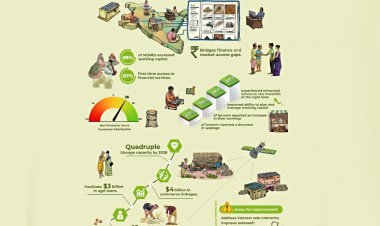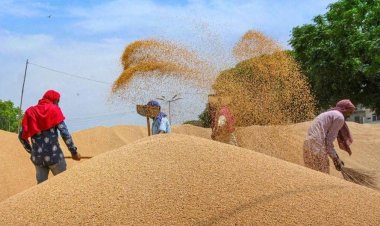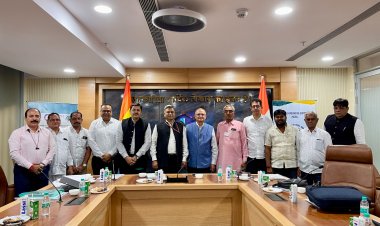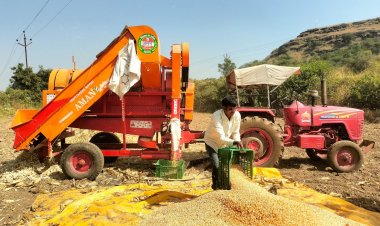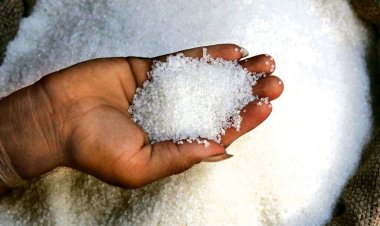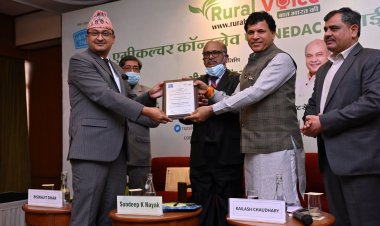Gram Unnati brings climate-compatible agriculture to over 5,000 acres in Uttarakhand; helps save 4,000 litres of water per acre
Gram Unnati worked closely with the local district administration, local maize processors, input companies, and lead farmers in a short span of 18 months, prompting 2,000 farmers to switch to climate-compatible crops that are commercially viable as well. It intends to scale up this intervention to 100,000 acres of spring maize in the next five years.

At a time when economies across the world are finding ways for sustainable farming due to depleting groundwater levels, Gram Unnati, India’s first integrated agri-tech solutions company, worked closely with multiple stakeholders to help farmers in Udham Singh Nagar district of Uttarakhand save 4,000 litres per acre by bringing climate-compatible agriculture to over 5,000 acres of farmland. This was stated in a Gram Unnati press release.
In what may become a lesson in climate compatible agriculture to millions of Indian farmers, Gram Unnati worked closely with the local district administration, local maize processors, input companies, and lead farmers in a short span of 18 months, prompting 2,000 farmers to switch to climate-compatible crops that are commercially viable as well.
Commenting on the success of the project, Aneesh Jain, CEO and Founder, Gram Unnati, said, “The success of the project comes at a time when we are dealing with acute water shortage across the world. According to the United Nations, by 2050 more than 5bn people could be affected by water scarcity. India, which constitutes 16 per cent of the total world population, has access to a meagre 4 per cent of the world’s water resources. The success of our pilot project in Uttarakhand will impact other farmers to shift towards climate-compatible crops without having an impact on yield and returns.”
Farmers of Udham Singh Nagar and adjoining areas in Uttar Pradesh — Rampur, Bareilly, and Pilibhit — traditionally take up a short-duration summer paddy crop after their Rabi harvest and before Kharif sowing. Based on research, Gram Unnati identified maize as a reasonably remunerative substitute for summer paddy. Maize is not only a short-duration crop, requiring less water compared to paddy but is also known to bring higher returns.
“The pilot project was successful in moving 5,000 acres of land to spring maize, which resulted in substantial water savings of as much as 4,000 litres per acre. The crop also generated 25 per cent higher yield on the same piece of land. This has emerged as a good example of ‘more crop per drop’. The project also contributed towards fulfilment of Sustainable Development Goals,” added Jain.
Jain said that the success of the project in Udham Singh Nagar has encouraged Gram Unnati to take up newer challenges.
“Gram Unnati intends to scale up this intervention to 100,000 acres of spring maize in the next five years,” Jain added.
As agriculture is the largest consumer of fresh water in India, the shift from high to low-intensity crops such as maize, pulses, millets, oilseeds, etc. has the potential to significantly reduce farmers’ dependence on rainwater/irrigation, while helping in greater water conservation.
It is estimated that out of total extractable groundwater available in India, 90 per cent goes to agriculture annually to often support highly water-intensive crops like paddy, sugarcane, and wheat, sometimes in severely water-stressed regions of the country. As many as 30 per cent of districts in India have reported ‘critical’ groundwater levels, according to the recent Central Ground Water Board data. The growing water crisis is being worsened by climate change with rising temperatures and uncertain rainfall patterns.



 Join the RuralVoice whatsapp group
Join the RuralVoice whatsapp group




















